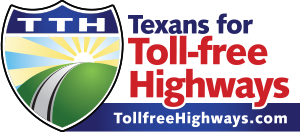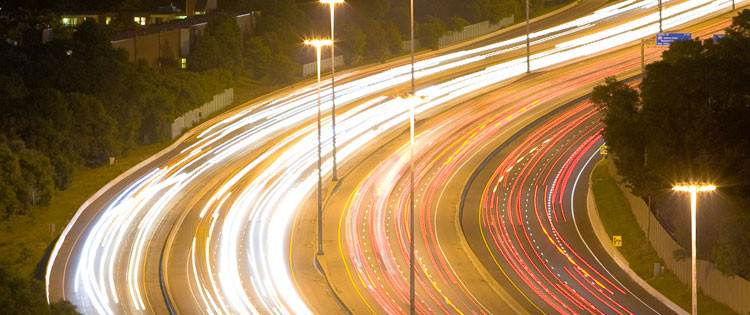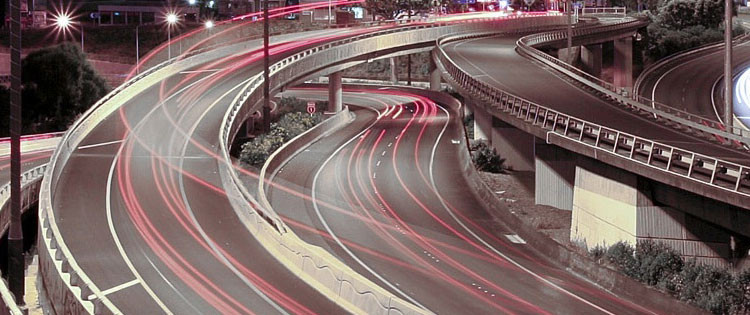The most important point to note is that the campaign literature for the initial toll roads in Houston did promise they’d eventually be free to everyone once the debt was paid off. That never happened. Unless the legislature passes our toll cessation bill, it never will. Call your state lawmakers NOW to insist toll comes down at (512) 463-4630.
No end in sight for HCTRA tolls, because there never was an end
By , Houston Chronicle, Updated: Aug 17, 2024
Almost since Harris County started collecting tolls, there has been a belief that someone somewhere promised the tolls would go away once the roads were paid for.
Well, the roads have long been paid for, at least those first roads, but the tolls are likely never going away. That’s in part because no one ever promised — really promised — they ever would.
For years there has been talk of what was said at the meetings or on flyers that have rarely, if ever, been shown. While some hold onto the legend as fact, county and toll officials have long called them misunderstandings, if not outright fabrications. There is no record that anyone with the campaign or the county said they were going to retire those bonds and end tolling when voters went to the polls.
That does not mean someone did not say it. Maybe they did. Maybe they were or were not with the campaign or the county. There is no record of everything everyone said at a community meeting and no record of any unofficial mailers that said it. The claim just is not in any ads printed at the time of the election. It is not in the coverage of either of Houston’s two competing daily newspapers prior to the election. It is not in the campaign materials.
What a review of the campaign materials and the coverage of it in 1983 will largely get you is a trip down memory lane of when the United States was debating Israel’s right to conduct retaliatory strikes and plans for the Houston-Dallas bullet train.
Campaign materials, however, do allude to an end of tolls. In 1983 flyers, supporters of the campaign noted that Dallas ended tolls on one of its roads once the bonds were paid and that state law at the time required the lifting of tolls if no bonds were outstanding.
“Toll roads will be free to everyone after they’re paid for,” one flyer said.
What voters approved is to borrow money and collect tolls “so long as any of the bonds are outstanding” for the creation and operation of the county’s roads. Specifically, that was for building the Hardy Toll Road, which state officials were considering, as well as building what became the Sam Houston Tollway so the state could build Beltway 8, the free lanes that act as its frontage road.
Many took that to mean that once the first bonds were paid off, tolls would be lifted.
Former County Judge Jon Lindsay, who championed the creation of the Harris County Toll Road Authority, said officials at the time never would have pledged to end the tolls after 20 or 30 years.
At the time of the vote, the broader debate was whether tolls would ever cover the costs of building and operating the roads. Part of the ballot proposition, designed by Lindsay and others, was to structure the bonds so they were backed by county tax revenues. If tolling fell short, it was county taxpayers left holding the bag.
While Lindsay was confident the tolls would cover it, critics of the plan said it could hamstring the county budget for decades.
Instead, the toll roads became the county’s biggest piggy bank, even as the toll road authority borrowed more. In the ensuing 40 years since creating HCTRA, officials have always been paying off something by borrowing more money to build more lanes or add interchanges and paying it all off with more tolls. It is a perpetual project, along with general operations, which dwarfs the initial borrowing. As of last Sept. 30, the agency had $2.79 billion in outstanding debt. Meanwhile, toll road users in fiscal 2023 paid $896.3 million to drive the lanes — meaning that at this point HCTRA raises enough money by tolls in a year to pay off the original 40-year debt.
Toll rates, meanwhile, have not changed in years and actually decreased for those with an HCTRA-issued tag.
Not only does that money pay for operations of the toll roads, it lands in the county’s general road coffers for other projects and helps with the county’s multimillion-dollar plan for better bike and pedestrian access.
Just as in 1983, Lindsay said most drivers do not fully understand the financing end of the toll roads, even if they think it is as simple as borrowing money to pay for construction. Elements of it often elude him, he said, though he was the face of the plan.
“There were people smarter than me behind it, lawyers and the finance,” said Lindsay, 88 and now long retired after terms in county and state government. “I’m just an engineer.”
“I wasn’t going to be around when that happened,” said Lindsay, who served as the county’s head from 1974 to 1994. “How could I tie the hands of someone else?”
Like Houston traffic, the belief that someone promised to lift the tolls never goes away, even as millions of trips take place on the Hardy, Westpark and Sam Houston each month.
“We do get the question,” said HCTRA Executive Director Roberto Treviño.
Toll officials just do not spend a lot of time answering it, as they cannot prove something did not happen or was not said. That the thinking persists among some, Treviño said, “doesn’t come into the decision-making process.”
Instead, Treviño and others said, they talk about the present.
“What we have to be focused on is mobility in the region,” said Tracy Jackson, the agency’s deputy communications director.
Mobility, meanwhile, means HCTRA has hundreds of millions of dollars in new projects in the pipeline, from a planned extension of the Hardy Toll Road to downtown Houston to removal of the original toll plazas along the Sam Houston Tollway.
Since those first users shelled out nickels and dimes from their driver-side window, tolling has become all electronic in the Houston area. Toll booths are now a relic, even if paying to use the road is not.
Getting rid of them, however, will be costly and complicated. Treviño said the plan is intertwined with other projects to make the intersections around the toll roads safer for drivers, cyclists and pedestrians.
“All inclusive, it is going to be more than $1 billion over the next several years,” he said.
Of that, Jackson said in an email that $525 million would be used to retrofit toll lanes, removes plazas and install the new gantries holding the electronic payment systems. Design of the new tolling points is expected to finish in a few months, officials said.
The change is not as simple as tearing out the booths, Treviño said. Traffic no longer needs to fan out to six or seven toll booths, but can instead remain in three or four lanes as equipment above the road tracks tolls. Those bloated areas around toll plazas are now less safe as drivers race through.
At large toll plazas such as the one along the Sam Houston Tollway south of Buffalo Bayou near Westchase, the work will mean a lot of leftover space, which Treviño said officials are also thinking about how they can reuse.
“Right now we don’t have one set plan for each of these areas,” he said, noting the need for park space in some neighborhoods near the toll roads, or wider intersections with more space for bike lanes or crosswalks. In some spaces, perhaps trees or other features could as a buffer from the noise and lights along the tollway.
Harris County Toll Road Authority will spend $525 million over the next few years redesigning and rebuilding tolling points along its roads. The aim is removing the outdated toll plazas and additional lanes and install the electronic equipment above the lanes.
What’s unlikely is a commercial option. Tollways in the northeastern U.S. and Oklahoma often have gas stations or restaurants built in some key areas, such as on overpass exits or quick off-ramps from the highway. Treviño said HCTRA is not considering commercial leases for the extra space.
Where warranted, however, entrances or exits could be added to relieve demand at key crossings, he said.
“The goal is making them an amenity for the county, not just the toll road users,” Treviño said, adding that anything that makes the toll roads operate better means better traffic in the surrounding area.
“There are going to be challenges,” he said. “I think we have no alternative with the traffic you are seeing out there.”





 Retiring Texas State Representative Joseph Pickett (D – HD 79) is one in a million. Truly there is no one in the Texas House who undertook transportation as a matter of personal study with the aim of improving every step of the process for both the government agencies in charge of delivering projects and also for the forgotten taxpayer like Joe Pickett. He announced his retirement right before Christmas citing his battle with cancer and the need to fully recover without the rigors of a legislative session. It’s truly a devastating loss for the people of Texas. Here’s why.
Retiring Texas State Representative Joseph Pickett (D – HD 79) is one in a million. Truly there is no one in the Texas House who undertook transportation as a matter of personal study with the aim of improving every step of the process for both the government agencies in charge of delivering projects and also for the forgotten taxpayer like Joe Pickett. He announced his retirement right before Christmas citing his battle with cancer and the need to fully recover without the rigors of a legislative session. It’s truly a devastating loss for the people of Texas. Here’s why. While the politicians argued eminent domain would only be used as a last resort, that’s the club TTC’s CEO John Crew needs to get landowners to sign over their land in negotiated settlements. We’ve seen it used prolifically — sign on the dotted line for the amount we’re offering or we’ll take it with eminent domain and pay you even less.
While the politicians argued eminent domain would only be used as a last resort, that’s the club TTC’s CEO John Crew needs to get landowners to sign over their land in negotiated settlements. We’ve seen it used prolifically — sign on the dotted line for the amount we’re offering or we’ll take it with eminent domain and pay you even less.